Introduction & Control of Dubas bug (Ommatissus lybicus)
A silent threat lurks amidst the palm trees in the tranquil oases of the Middle East and North Africa. Ommatissus lybicus, commonly known as the Dubas bug (Arabic: حشرة دوباس النخيل) has earned a notorious reputation for its devastating impact on date palms, a vital cultural and economic asset to the region. This article explores the characteristics, behavior, and implications of this enigmatic pest, shedding light on the challenges it poses to agricultural sustainability and livelihoods.
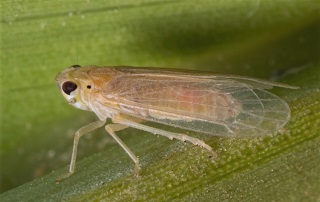
Understanding Dubas bug
Dubas bug belongs to the order Hemiptera and the family Tropiduchidae. It is relatively small in size, measuring about 3-4 millimeters in length, yet its collective presence can wreak havoc on date palm plantations. The name “Spiraling Whitefly” originates from the distinctive spiral patterns formed by the insects’ nymphs as they feed on the undersides of palm leaves.
Life Cycle and Behavior
The life cycle of the Dubas bug consists of egg, nymph, and adult stages. After hatching from eggs laid on the leaves, the nymphs begin to feed on the plant’s sap, secreting honeydew in the process. This sugary substance serves as a breeding ground for sooty mold, further compromising the palm’s health. As the nymphs mature into adults, they continue to feed and reproduce, perpetuating the cycle of infestation.
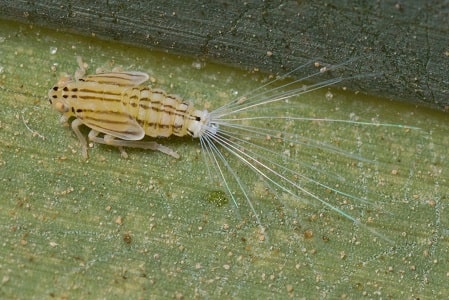
Impact on Date Palm Cultivation
Date palms hold immense cultural, nutritional, and economic significance in the affected regions. They provide shade, shelter, and sustenance to both humans and wildlife. However, the infestation by Ommatissus lybicus threatens this delicate balance. By draining the palm of its vital nutrients and weakening its defenses, the pest renders the tree more susceptible to diseases and environmental stressors. Consequently, crop yields decline, and the quality of dates harvested diminishes, jeopardizing the livelihoods of countless farmers and communities reliant on this ancient crop.
Damage
Damage caused by the Dubas bug is divided into two types.
Direct Damage
In this type of damage, both the larvae and adult insects of the pest inflict harm on date palms by feeding on the plant sap, resulting in yellowing and drying of the leaves and ultimately weakening the trees. Severe infestations of the pest lead to fruit drop (Thacker et al., 2003).
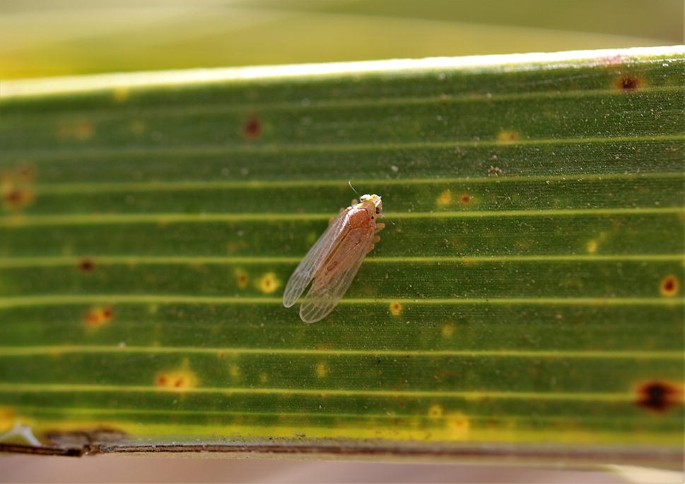
Indirect Damage
This type of damage arises from the secretion of honeydew, which serves as a food source for saprophytic fungi. This causes fruit contamination and reduces the marketability of the product.
Furthermore, as a result of the female date Dubas bug oviposition, the flow of plant sap is interrupted, and the living tissues of the tree and plant cells around the oviposition site are destroyed. Fruits from infested trees ripen later and become smaller, wrinkled, and less sweet. Additionally, honeydew secretion on the plant makes gardening operations such as pollination, pruning, and bunch arranging more difficult, thus increasing the costs for farmers. Moreover, the dripping of honeydew under the trees creates problems in the movement of people and equipment.
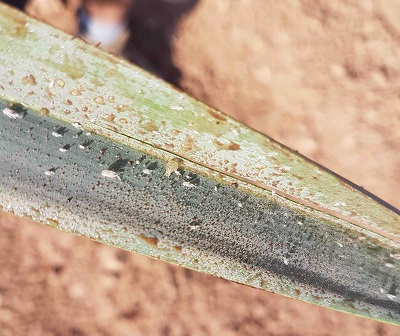
The feeding behavior and oviposition of the pest, as well as their movement on trees, may exacerbate the incidence of date palm leaf spot disease caused by pathogens Coniothyrium-like. Field surveys conducted in orchards with a higher prevalence of date palm weevil damage also show a higher incidence of leaf spot disease.
Management Strategies
Controlling Ommatissus lybicus presents a multifaceted challenge that requires integrated pest management (IPM) approaches. Chemical pesticides, though commonly used, raise concerns regarding environmental sustainability and long-term efficacy due to the pest’s ability to develop resistance. Biological control methods, such as the introduction of natural predators or entomopathogenic fungi, offer promising alternatives that minimize harm to beneficial organisms and reduce reliance on synthetic chemicals. Additionally, cultural practices like pruning infested fronds and maintaining proper irrigation can help mitigate the spread of the pest.
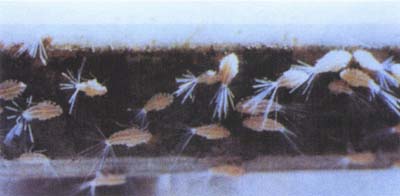
For date palm trees that suffer from nutrient deficiency, the damage caused by the Dubas bug is more severe, especially in trees deficient in potassium. Therefore, the use of 1000-1500 grams of potassium sulfate along with other elements, especially nitrogen and phosphorus (per palm tree from mid-February to mid-March), depending on the climate and regional conditions, can strengthen the tree, compensate for the damage caused by the activity of the bug, and also thicken the leaf tissues and reduce the activity of sap-sucking pests, including the Dubas bug.
It is recommended to avoid excessive use of nitrogen fertilizers. Because it can lead to thinning of leaf tissue. It is, also suggested to maintain the balance of soil elements by using fertilizers rich in potassium and phosphorus. In general, it is recommended that the fertilization time is such that its effects, such as tree consistency and leaf tissue thinning, do not coincide with the peak of pest activity.
Chemical Control
The diversity of insecticides registered for use against the date palm weevil is limited. Therefore, the registration of new insecticides with different modes of action and low consumption rates is crucial. Indiscriminate use of various pesticides in palm groves has led to numerous technical and environmental problems. For years, the broad-spectrum insecticide diazinon, with its extensive coverage and method of application, posed significant risks to the environment, humans, and non-target organisms, especially birds. The use of diazinon is currently prohibited. This insecticide belongs to the organophosphate group and has highly undesirable effects on the nervous and cerebral systems of individuals, especially those under twelve years old (Marcial & Hagiwara, 2007; Eskenazi et al., 1999; Attar & Knowles, 1982).

Diazinon in mammals is metabolized to diazoxon, which can inhibit acetylcholinesterase enzyme activity by more than 10,000 times. Although this substance is rapidly hydrolyzed in mammals due to their high hydrolysis system, it remains highly toxic in birds’ blood, making it hundreds of times more toxic to birds’ bodies. In comparison to the recommended concentration of new-generation insecticides, the concentration of diazinon is ten times higher. Therefore, the use of insecticides with lower concentrations and fewer adverse effects is imperative.
Future Outlook
As climate change exacerbates ecological imbalances and creates favorable conditions for pest proliferation, the threat posed by Ommatissus lybicus will likely intensify. Collaborative research efforts, technological innovations, and community engagement are essential components of a proactive strategy to combat this menace. By fostering resilience within palm ecosystems and promoting sustainable agricultural practices, we can safeguard the heritage of date palm cultivation for generations.
Conclusion
Ommatissus lybicus stands as a formidable adversary to the cherished date palm, challenging the resilience of agricultural systems in the Middle East and North Africa. However, with concerted action and a holistic approach to pest management, we can mitigate its impact and preserve the cultural and economic heritage embodied by these majestic trees. In the face of adversity, innovation and collaboration offer hope for a future where palm groves thrive, and communities flourish.
